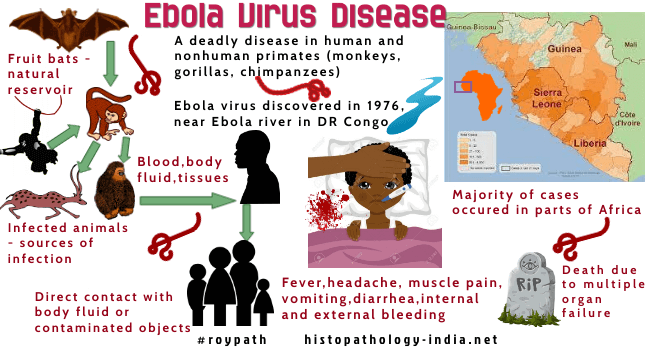|

Custom Search
|
|
Infectious Disease Online Pathology of Ebola Virus Disease
|

|
Ebola virus causes acute hemorrhagic fever leading to up to 90% lethality. The Ebolaviruses known to have five subtypes: Ebola virus (formerly known as Zaire virus), Sudan virus, Reston virus (non human), Tai Forest virus and Bundibugyo virus. Of the five identified ebolavirus subtypes, four are capable of human-to-human transmission. Recent study implicates "Fruit bats" as reservoir hosts for ebolaviruses. Increasingly frequent outbreaks and the placement of Ebola virus in the category A list of potential biothreat agents have boosted interest in this virus. The disease closely resembles Marburg Virus Disease. Ebola Virus Disease has a high mortality. Development of new technologies (Example: reverse genetics systems) and extensive studies on Ebola haemorrhagic fever in animal models have substantially expanded the knowledge on the pathogenic mechanisms that underlie this disease. Two major factors in Ebola virus pathogenesis are the impairment of the immune response and vascular dysfunction. The ebolaviruses appear to spread rapidly by close and prolonged contact with an infected person or by inoculation from contaminated syringes and needles. Infected patients should be strictly isolated to prevent spread of ebolavirus infection.
|
|
|
Copyright © 2022 histopathology-india.net

